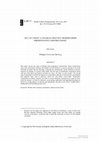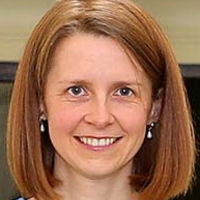PhD Dissertation by Orit Eshel

in the Dublin Institute of Advanced Studies, I'd like to thank Eibhlín Nic Dhonncha for her help ... more in the Dublin Institute of Advanced Studies, I'd like to thank Eibhlín Nic Dhonncha for her help and cheerfulness. I am indebted to Julie Stevens for her proof reading and dialogue. Tal Kaplinsky's coaching during this last year has been crucial and has given me tools for life. The writing of this dissertation spanned over seven years in which I went through major life changes. I was lucky to have good friends and colleagues around me. I'd especially like to thank Tali Herman, Shlomit Warshavsky, Adi Navon, Tirza Arav, Michal Shaty-Weissblau, Neta Goder, Inbal Nachum, Hagit Kimchi, Dorreen Nothnagel, Michal Peleg Alboher, Noa Rave, Ilona Spector-Shirz and Ya'ala Cohen. I've been fortunate to have my "Irish family" -Malachy McKenna and Gili Diamant. Thank you Gili for many conversations on all matters Irish and for always being so sensible. To Malachy for an endless conversation about Irish, colours and life, be it in Blackrock, Rann na Feirste, Stockholm, Helsinki or Glasgow, as well as for reading and commenting on some of my drafts. The most vital component of writing the dissertation has been my 'white table havruta' -Tally Shitrit and Efrat Miller. I can't imagine going through this PhD without mutual feedback and our discussions on anything academic and nonacademic. I am indebted to my parents, Yehudit and Eli Eshel, for always being so supportive and generous and for always having literature in my life.
Papers by Orit Eshel

This article surveys two types of Modern Irish presentative constructions. These constructions op... more This article surveys two types of Modern Irish presentative constructions. These constructions open with a presentative element and introduce an NP (entity) or a nexus (a situation or an event involving an entity) into the discourse. I describe the constructions' poetic functions in literary narratives by Pádraic Ó Conaire (1882-1928). The first type of presentative construction opens with one of the deictic-presentative elements seo 'here', sin 'there' or siúd 'yonder'. The second type of presentative construction features as a presentative element of various forms of perception and cognition verbs, such as d'fheicfeá 'you'd see' and shílfeá 'you'd think'. Presentative constructions in literary narrative are used in several functions: expression of a point of view, either the narrator's or that of a character, scene-setting, explication, and signalling boundaries in the text in varying degrees of cohesion and delimitation. The latter is also used to 'sudden effect', adding drama and speeding up story time.
This paper is intended in part to add to the discussion of the copula given in the standard gramm... more This paper is intended in part to add to the discussion of the copula given in the standard grammar of Modern Irish, namely Graiméar Gaeilge na mBráithre Críostaí, in the sense that the paper places particular importance on narrative context for the examples we will be discussing, whereas the instances of the copula cited in Graiméar Gaeilge na mBráithre Críostaí (chapter 16) are mostly decontextualized.
Chapters by Orit Eshel

Labor Omnia Uicit Improbus: Miscellanea in Honorem Ariel Shisha-Halevy, 2016
Des mots dépouillés de leur magie ne sont que des hiéroglyphes morts. Des vies privées de recherc... more Des mots dépouillés de leur magie ne sont que des hiéroglyphes morts. Des vies privées de recherche, d'enthousiasme, de dons échangés, sont aussi dénuées de sens et vides que des lettres mortes. Rencontrer un homme que l'on peut appeler un livre vivant c'est arriver à la source même de la création. Un tel homme nous permet de contempler le feu dévorant qui fait rage à travers l'univers tout entier et qui ne donne pas seulement chaleur et lumière, mais une vision durable, une force durable, un courage durable. Henry MILLER, Les livres de ma vie, L'Imaginaire Gallimard, Paris 1957, p. 179. ARIEL SHISHA-HALEVY Words divested of their magic are but dead hieroglyphs. Lives devoid of quest, enthusiasm, of give and take, are as meaningless and barren as dead letters. To encounter a man whom we can call a living book is to arrive at the very fount of creation. He makes us witness of the consuming fire which rages throughout the universe entire and which gives not warmth alone nor enlightenment, but enduring vision, enduring strength, enduring courage.
Conference Presentations by Orit Eshel

In the last few years I have been studying the syntax of literary narratives, especially those by... more In the last few years I have been studying the syntax of literary narratives, especially those by Padraic O Conaire and Mairtin O Cadhain. The initial purpose was mapping the narrative functions of clausal and ultra-clausal construction and seeing whether clusters of linguistic elements and constructions can tell me what aspect of the story it is, even if I don't have their lexical contents. Based on linguistic form and function and on narratological criteria concerning narrator's perceptibility and character's subjectivity, I have found a system of four main narration modes. The evolution mode is the one enfolding the plot and it features mostly the preterite and imperfect tenses, as well as focus constructions signalling peaks. It is the most objective mode in terma of narrator's perceptibility and character's subjectivity. The mise-en-scene mode provides setting information regarind time, place, décor and characters and consists mostly of adverbial and presentational cleft constructions. The consciousness mode represents character's point of view and subjectivity and features syntax which is recognized in the literature as Free Indirect Discourse and Interior Monologue. The fourth mode is the narrator's channel. It is a kind of a narrator voice over, linking parts of the narrative together, giving meta-narrative comments, background information about the characters and the story world, as well as narrator's evaluative, moralistic and philosophical comments which help to understand the story world and the narrator's point of view. This mode shows high usage of first and second person forms, and varitey of linguistic forms, including high propertion of present tense and generic forms as well as nominal constructions. The modes are not clear cut categories and are somewhat like the cardinal vowels in the vowel trapezoid with borderline cases between them. For example, a verbal clause like tháinig an oíche 'night came' has a form typical of the evolution mode but lexical content which is typical of the mise-en-scene mode, setting the scene. This kind of cases appear in mise-en-scene environment of a scene that will show a dramatic change, so the change of setting is also signaled in a way as a part of the plot concatenation. In contrary to the story, which is the linear and chronological sequence of events, the plot is the sequence of events as manipulated by the narrator. Linguistically, manipulations are signaled by the interplay of syntactic patterns and means of
The paper presents a narrative grammar analysis of the linguistic signals of narratorship in Pádr... more The paper presents a narrative grammar analysis of the linguistic signals of narratorship in Pádraic Ó Conaire’s fictional writing. Narratologically speaking, the narrator is most perceptible in portions of the story pertaining to his/her here-and-now. In these portions, the narrator addresses the reader and makes meta-narrative comments as well as philosophical comments. The narrator is less perceptible when making background comments about the story world and the characters, when constructing the narrated world and setting the story, or in plot-concatenating portions of the narrative. Seen from a linguistic perspective, narrator specific grammar is characterized by expression of deixis, modality, evaluation and subjectivity. The paper will survey common grammatical elements, verbal forms and syntactic patterns.











Uploads
PhD Dissertation by Orit Eshel
Papers by Orit Eshel
Chapters by Orit Eshel
Conference Presentations by Orit Eshel